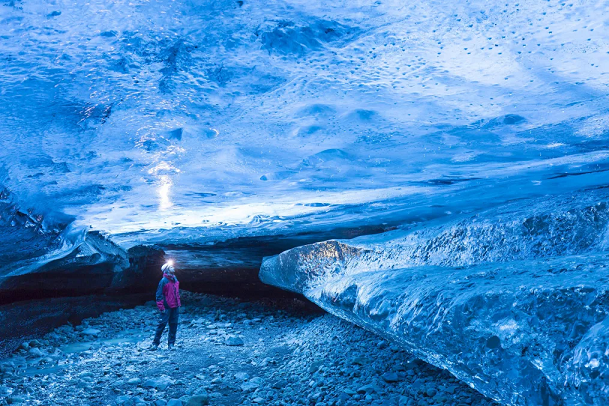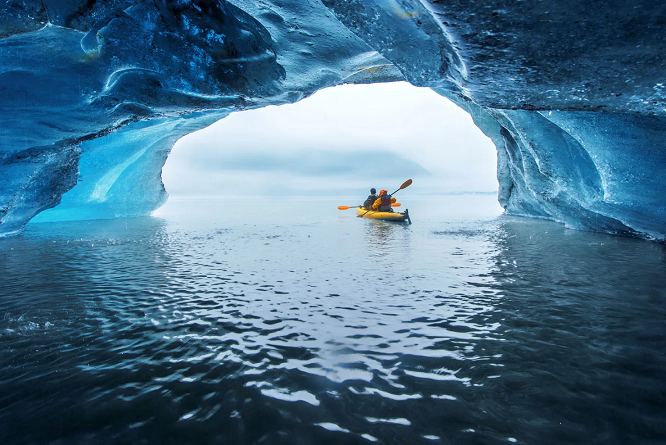In 2019, Zach Sheldon, an experienced tour guide, witnessed large ice chunks break off Valdez Glacier in Alaska. The following day, he led a group to the glacier's crest, where they discovered the bodies of three boaters, two Germans and an Austrian, trapped by ice. They had likely been drawn to the glacier’s blue ice, not realizing it was about to calve. A tourist at a natural ice cave in the Breiðamerkurjökull Glacier in Vatnajökull National Park, Iceland. An American tourist lost his life in an ice cave in August. Sven-Erik Arndt /Arterra/Universal Images Group/Getty Images
A tourist at a natural ice cave in the Breiðamerkurjökull Glacier in Vatnajökull National Park, Iceland. An American tourist lost his life in an ice cave in August. Sven-Erik Arndt /Arterra/Universal Images Group/Getty Images
Glacier tourism is rising as people rush to see these natural wonders before they disappear. However, glaciers are becoming more dangerous as they melt. The terrain shifts quickly, and accidents are becoming more frequent, with fatalities linked to both the unstable ice and the impact of climate change.
While glaciers offer striking beauty, they are also a stark reminder of climate change, with guides like Sheldon witnessing firsthand how fast the landscape is changing. Despite the risks, tourist numbers continue to grow, as many are drawn to these disappearing natural wonders. Yet, the increase in tourism also accelerates the glaciers' decline due to the carbon emissions generated by travel.






